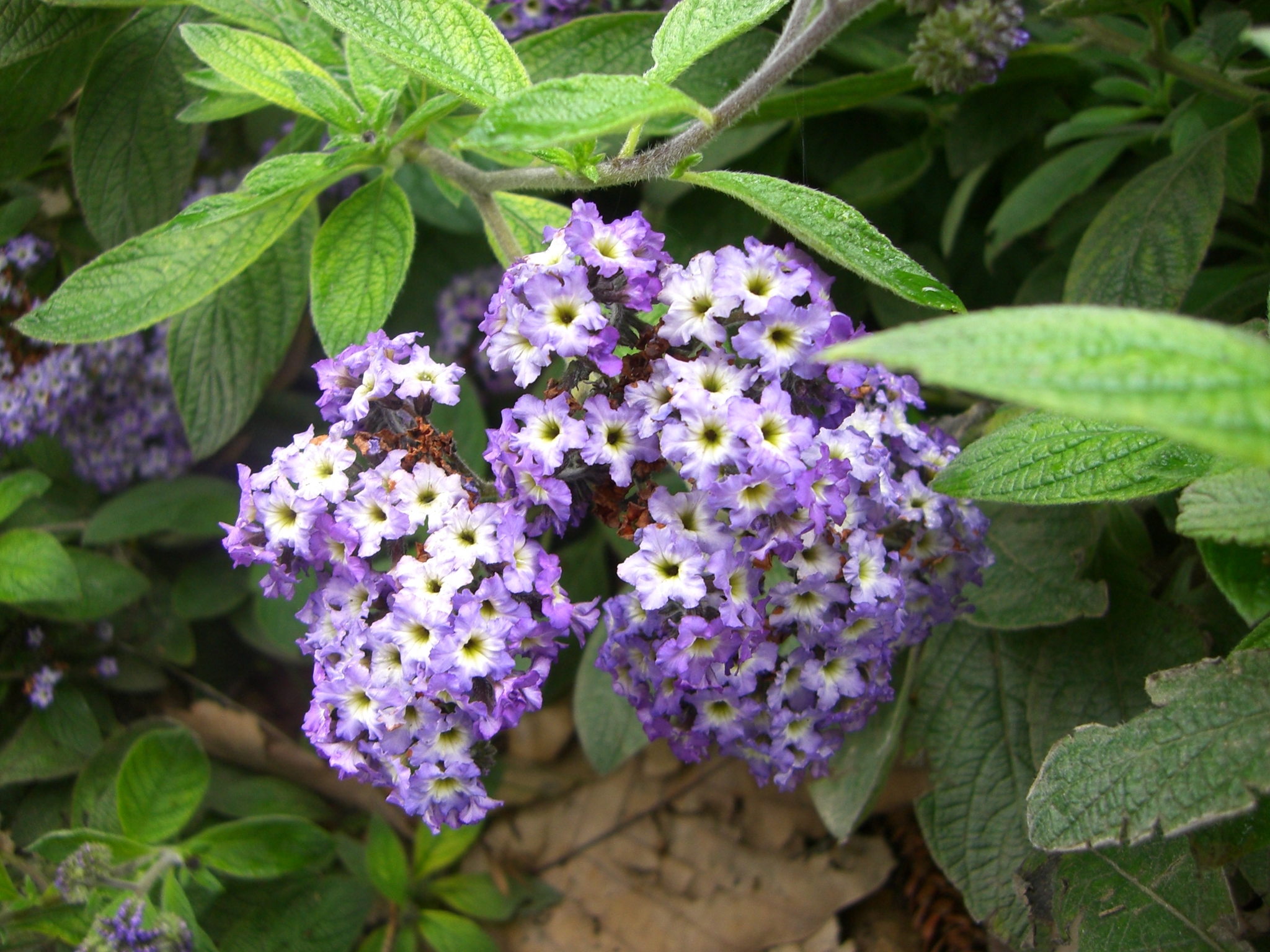
Annual to perennial herbs, rarely shrubs or trees or vines; usually bearing stiff, tubercle-based hairs; plants hermaphrodite or dioecious (sometimes in Heliotropium). Leaves alternate, occasionally lower ones opposite, simple; stipules absent. Flower clusters in cymes that coil in a characteristic form (scorpioid or helicoid), rarely solitary and axillary. Flowers bisexual, regular (rarely slightly irregular). Sepals mostly 5, free or united at the base. Petals united, mostly 5, often with scales in the throat, mostly blue, occasionally white, pink or yellow. Stamens mostly 5, alternating with the petals and attached to the tube, sometimes with a nectary disk. Ovary superior. Carpels 2, united, each with 2 chambers, style terminal stigma plug-like. Fruit usually a schizocarp, containing 4 nutlets.
Heliotropiaceae is often treated as part of Boraginaceae. This treatment follows Stevens, P.F. (2018, Angiosperm Phylogeny Website).
Heliotropiaceae are usually vegetatively like Boraginaceae and also have similar inflorescences and flowers, but the style is terminal and the stigmatic head is almost plug-like. The fruit is often a schizocarp. (Stevens 2018).
Cosmopolitan. 4 genera, 425 species; 1 genus and 78 species in Australia.
Created by: Val Stajsic
Updated by: Val Stajsic, April 2018
